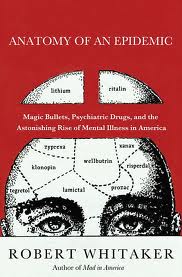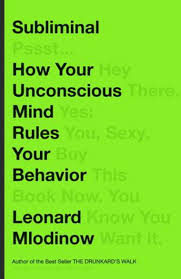Todd Keenan
Gahanna-Lincoln High School
[email protected]
Anatomy of an Epidemic
Author(s): Robert Whitaker
ISBN: 13-0307452425
APA Style Citation
Whitaker, R. (2010). Anatomy of an Epidemic: Magic Bullets, Psychiatric Drugs, and the Astonishing Rise of Mental Illness in America. New York: Random House, Inc..
| open_your_class_with_this_tomorrow_epidemic-1.pdf |
Do you want an insightful yet extremely controversial book regarding the treatment of mental illness? This is it.
Anatomy of an Epidemic is a fantastic and thorough investigative report on the effects of medicine on mental illness. The argument of the author is that medicine has had an adverse effect on those taking it. The question the author poses is, "If we have made so many great advancements in medicines for mental illness, then why have we seen such a dramatic increase in the number of the mentally ill individuals during the last 25 years?"
He answers the question by citing a tremendous amount of research and the results of numerous clinical trials - some of which were never released in the mainstream media.
A few interesting insights from Whitaker’s book:
- Robert Post, M.D. a professor of psychiatry at George Washington University, who has published over 800 articles, recently said in 2008 at an APA Convention, "Right now after 50 years after the advent of antidepressant drugs, we still don't really know how to treat bipolar depression."
- Thorazine, the first major antipsychotic, was original derived as a major tranquilizer for use during surgeries turned became the number one treatment method for schizophrenia.
- In 1985, sales of antidepressants and antipsychotics in the United States amounted to $503 million.
- In 2008, sales of antidepressants and antipsychotics in the United States amounted to $24.2 billion.
- In 1987, there were 16,200 children under 18 who received supplemental security income payments for mental illness.
- In 2007, there were 561,659 children under 18 who received supplemental security income payments for mental illness.
- Joseph Biederman, Chief of Clinical and Research Programs in Pediatric Psychopharmacology at Massachusetts General Hospital received $1.6 million from pharmaceutical companies from 2000-2007 for speaking engagements to market their drugs to physicians.
- Karen Wagner, director of child and adolescent psychiatry at the University of Texas, collected $160,000 from a pharmaceutical company when she promoted their antidepressant drug (Paxil) in an article in which she also falsely reported the results of a pediatric trial of the drug.
Other Related Resources
The following eleven-minute video shows Mr. Whitaker summarizing finding from his work.
http://www.youtube.com/watch?v=5VBXWdhabuQ
The following link leads to a critique of Anatomy of an Epidemic by schizophrenic expert E. Fuller Torrey, MD published online by the Treatment Advocacy Center.
http://www.treatmentadvocacycenter.org/index.php?option=com_content&id=2085
The following link is a short two-page summary of the findings presented in Anatomy of an Epidemic.
http://www.ncmhr.org/downloads/Anatomy-Of-An-Epidemic-Summary-Of-Findings-Whitaker.pdf
David Antonuccio’s research is presented in an article titled Antidepressants: A Triumph of Marketing Over Science published in Prevention & Treatment, Volume 5, Article 25, posted July 15, 2002
Copyright 2002 by the American Psychological Association
http://www.antidepressantsfacts.com/2002-07-15-Antonuccio-therapy-vs-med.htm
Psychological Figures and Concepts
Antidepressants
Antipsychotics
Psychological disorders and treatments
Bipolar disorder
Biomedical treatments
Schizophrenia



 RSS Feed
RSS Feed